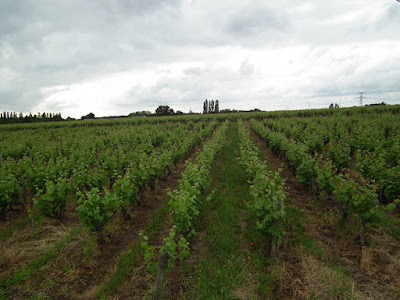Agroecology - agricultural practices that take the ecology into account.
Farmscale - an individual whole farm management approach.
Landscape scale - a management approach that is scaled up to focus on an entire area, not just individual farms. Sometimes referred to as 'regional scale'. It necessarily involves many more stakeholders, both private and public.
Sustainable agriculture - an approach to agricultural practices that takes into account economic, environmental and social aspects.
Conservation Biological Control - the use of landscape scale management practices to control pests and diseases. Naturally occurring indigenous predators (as opposed to introduced native or exotic predators) are provided with food sources and shelter throughout the year to ensure their numbers are maintained and they are available for pest control in an effective and timely manner.
Ecological Compensation Area - often abbreviated to ECA. Uncultivated areas such as hedges, crop margins and stone walls. These are key to Conservation Biological Control techniques.
Ecosystem services - elements of the environmental matrix such as decomposition, nutrient cycles, soil formation, water, climate and aesthetics.
Agroecosystem - an agricultural environment which incorporates a natural community of plants and animals.
And finally, the biggest buzzword of them all:
Biodiversity - the most widely accepted definition today comes from the 1992 Convention for Biological Diversity and is 'the variability among living organisms...and the ecological complexes of which they are part; this includes diversity within species, between species and of ecosystems.' It is generally accepted that the higher the level of biodiversity and the more complex the inter-reactions between species and their environment, the more stable and sustainable the ecological system is. It is further generally accepted that high biodiversity and sustainability is a Good Thing.
Vines with green cover between the rows - becoming the norm.
 So, how does all this relate specifically to vineyards?
So, how does all this relate specifically to vineyards?In 2000, vineyards covered 3% of French farmland, but soaked up 20% of the pesticides used in agriculture here. ('Pesticides' is used in the current sense of the word, meaning herbicides, insecticides and various other biocides.) Ten years later, the situation regarding pesticide use was changing very rapidly, and it was the Loire vineyards leading the way. Nowadays, sustainable agricultural practices are considered very normal, even the common sense no-brainer approach, although even today, not all vineyards have taken up the challenge and you still see 'nuked' bare-earth parcels of vines dotted about.
The use of acaricides (miteicides) has been widely replaced by the biological control of using predatory mites. Green cover in vineyards is now common, used to reduce the vigour of the vines and to act as a sponge, soaking up excess moisture.
The biodiversity quickly builds up in a recently abandoned vineyard.
 In 2005 the 120 winemakers within the 65km² Saumur-Champigny wine appellation created an appellation wide flagship project to encourage biodiversity and control vine pests. The appellation sits in a triangle between Saumur, Montsoreau and Chacé, north-west of Fontevraud, with the Loire river as the northern boundary. The average production per winemaker is 85 000 hl per year. From the beginning, scientists from the Institut National de la Recherche Agronomique (INRA) have been involved, but the fact that the project was initiated by the growers themselves makes it very different to one which is delivered and managed by a government body.
In 2005 the 120 winemakers within the 65km² Saumur-Champigny wine appellation created an appellation wide flagship project to encourage biodiversity and control vine pests. The appellation sits in a triangle between Saumur, Montsoreau and Chacé, north-west of Fontevraud, with the Loire river as the northern boundary. The average production per winemaker is 85 000 hl per year. From the beginning, scientists from the Institut National de la Recherche Agronomique (INRA) have been involved, but the fact that the project was initiated by the growers themselves makes it very different to one which is delivered and managed by a government body.To a large extent the project has an economic basis. The growers were seeing the cost of pesticides spiralling ever upward, and they were conscious that the use or otherwise of pesticides can alter the consumer's perception of the appellation. Being pesticide free can be used as a marketing tool.
A vineyard in early spring. Note the nearby woodland, providing
shelter to beneficial insects in winter when the vines are exposed.
shelter to beneficial insects in winter when the vines are exposed.
 Today roughly half the winemakers in the appellation are fully onboard and actively involved in the project. Why does it matter? Well, that is the subject for another blog post later.
Today roughly half the winemakers in the appellation are fully onboard and actively involved in the project. Why does it matter? Well, that is the subject for another blog post later.Susan
Source: Protection des Paysages Viticoles, a paper by G. Pain et al, 2010, Mission Val de Loire.

3 comments:
Happy to see this trend toward biodiversity and away from nasty chemicals. In addition to the sales angle, it allows the soil to recover and grow healthier crops. Healthier people, too.
Emm: Good point about the soil - there is plenty of evidence to suggest that herbicides destroy soil structure and microbes.
Spent years hanging about with organic farmers, happy to bend your ear one of these days.
Post a Comment